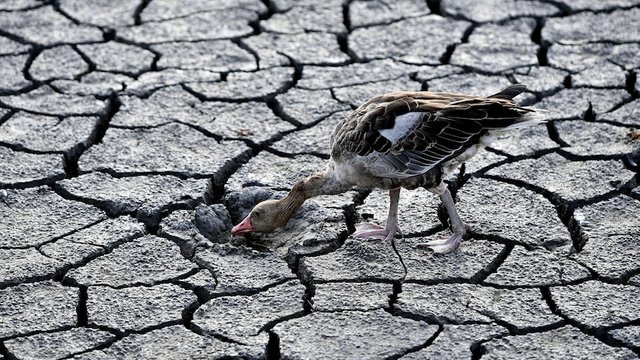Scientists warn that the current drought may be the worst in 500 years as Europe's rivers dry up.
Parched streams destroy crops, power plants, barge traffic, industry, and fish populations.
France's longest river has never flowed so slowly; in some spots, the Loire can now be crossed on foot. Barge navigation on the Rhine is quickly becoming impassable. Crops in Italy are severely hampered by the Po's 2 meter drop below average. The Danube is being dug up by Serbia.
Drought across Europe is turning once-powerful rivers into trickles, which could have severe effects on industry, freight, energy, and food production — just as supply constraints and price hikes brought on by Russia's invasion of Ukraine start to bite.
Climate breakdown has caused Europe's vital waterways to become increasingly hot and under-refilled due to an extremely dry winter, spring, record-breaking summer, and frequent heatwaves.
The drought in western, central, and southern Europe may become the worst the continent has seen in more than 500 years, according to meteorologists, who also predict no major precipitation in the foreseeable future.
Because the event is still going on, we haven't thoroughly analyzed it, according to Andrea Toreti of the Joint Research Centre of the European Commission. "The drought in 2018 was unlike any other incident in the previous 500 [years]." But I believe this year has been worse.
According to Germany's Federal Institute of Hydrology (BfG), the Rhine, whose waters are utilized for drinking, industry, agriculture, and power generation, will continue to recede until at least the start of next week.
According to the BfG, the water level at the crucial Kaub marker, 50 kilometers downstream of Mainz, which monitors navigability rather than water depth, dropped below 4JUdGzvrMFDWrUUwY3toJATSeNwjn54LkCnKBPRzDuhzi5vSepHfUckJNxRL2gjkNrSqtCoRUrEDAgRwsQvVCjZbRyFTLRNyDmT1a1boZV
In order to minimize their draft, many barges, which transport coal for power plants and essential raw materials for industrial juggernauts like steelmaker Thyssen and chemical juggernaut BASF, are currently running at approximately 25% of their capacity, tripling shipping costs.
The 760 miles (1,233 km) of the Rhine run from Switzerland through Germany's industrial core before reaching the North Sea at the megaport of Rotterdam, where it has been a crucial component of northwest Europe's economy for centuries.
German and European economies would be severely impacted by a complete stoppage of Rhine barge traffic. According to analysts, a six-month suspension in 2018 cost almost €5 billion (£4.2 billion), and low water levels are expected to cost Germany 0.2 points of economic growth this year.
